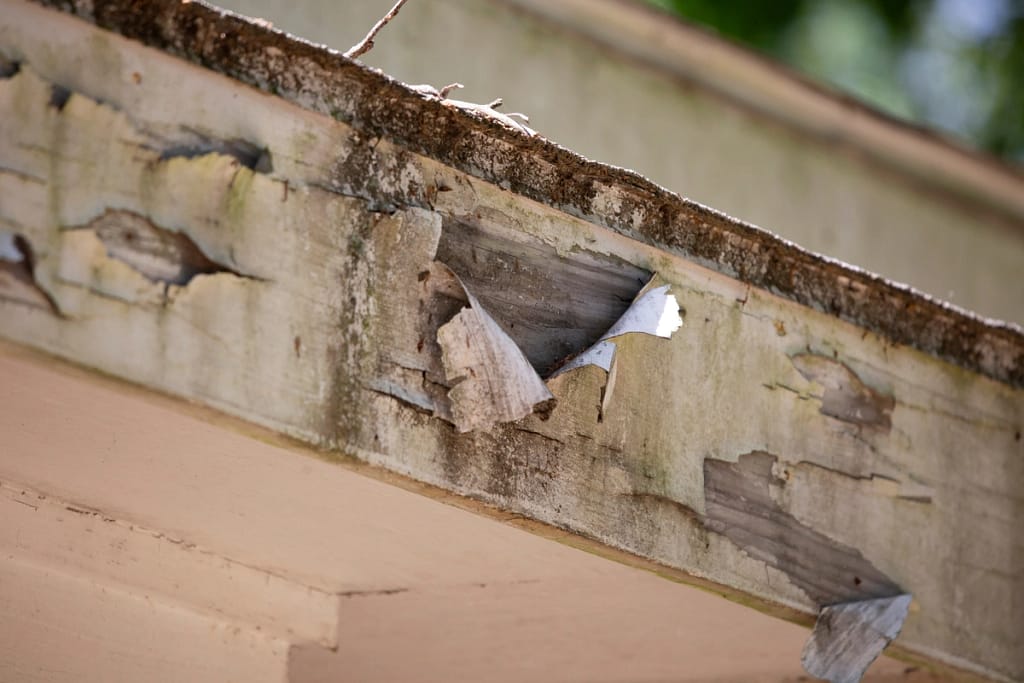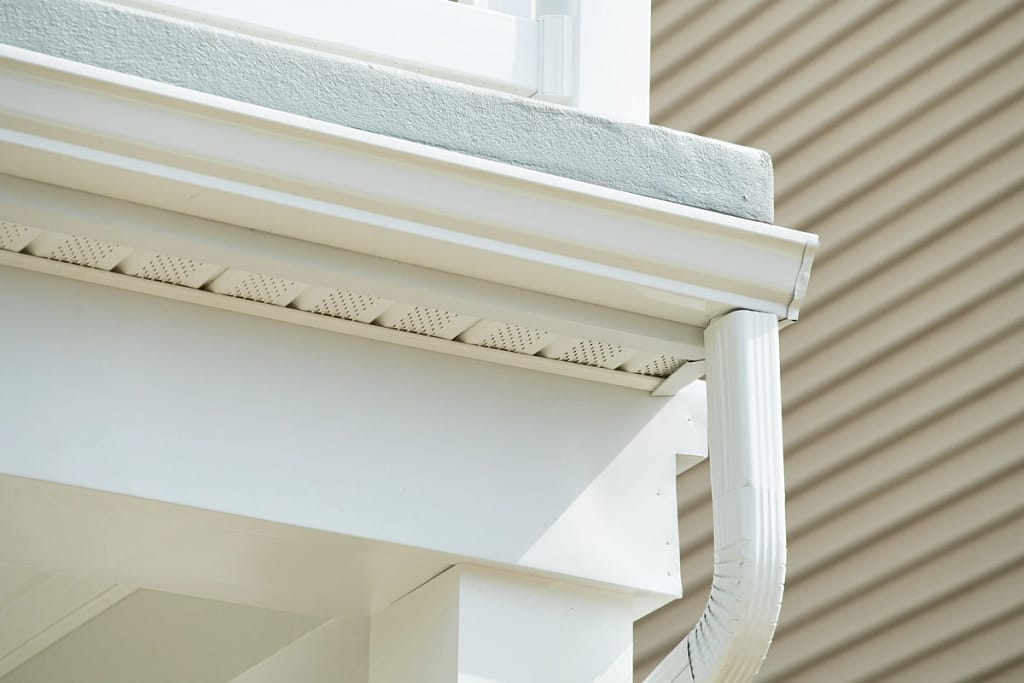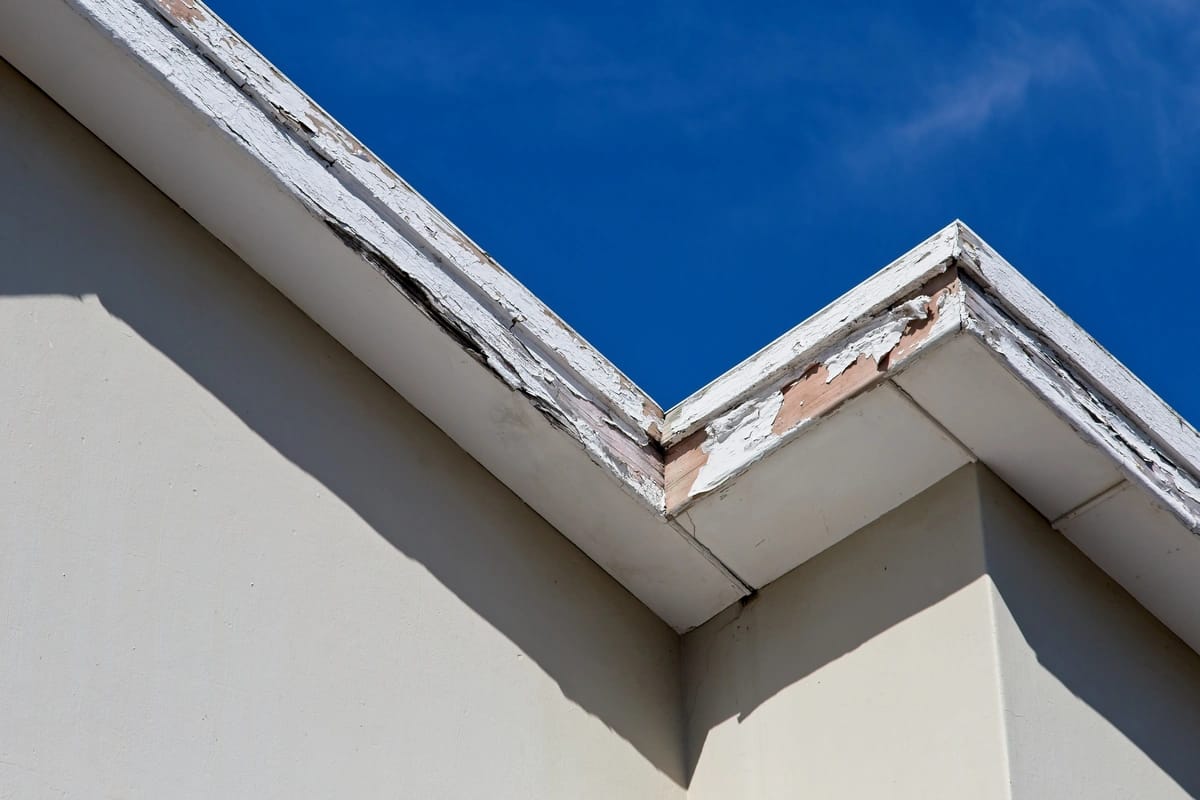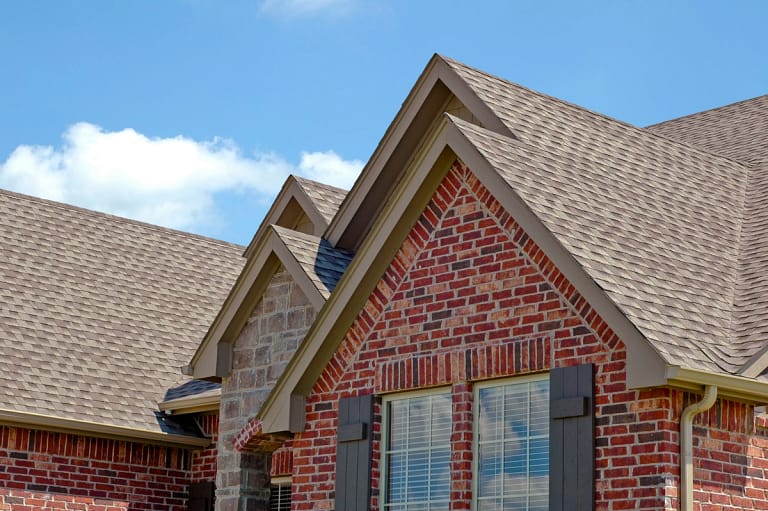Your home’s exterior is hugely important to keeping your home safe, warm, and dry. One often overlooked component in this defense system is the fascia board. The fascia board is a critical part of your roofing system, serving both functional and aesthetic purposes. In this comprehensive guide, we’ll delve into:
- What the fascia board is
- How to spot signs of damage
- When to consider fascia board replacement
- What costs you can expect
What Is a Fascia Board?
Before we delve into the details of fascia board replacement, let’s start with the basics: what is a fascia board?
The fascia board is a long, straight board that runs horizontally along the lower edge of your roof, parallel to the ground. It’s typically attached to the ends of the rafters or trusses and is positioned just behind the gutter system. Its primary functions are:
- Protection: The fascia board protects the edges of your roof and the interior of your home from moisture and weather-related damage.
- Aesthetics: It adds a polished, finished look to the roofline, enhancing the overall curb appeal of your home.
- Gutter Support: The fascia board provides a stable mounting surface for gutters, ensuring proper drainage and preventing water damage to your home’s foundation.
Signs of Fascia Board Damage

Like any other component of your home, fascia boards can deteriorate over time due to exposure to the elements. Recognizing the signs of fascia board damage is essential to prevent more extensive issues. Here are some common indicators:
- Rotting or Decay: The most apparent sign of fascia board damage is rot or decay. You may notice discolored, soft, or spongy areas on the fascia board, often accompanied by a musty odor.
- Peeling Paint: If your fascia board has peeling or blistering paint, it could be a sign of water damage underneath the surface.
- Cracks and Splits: Visible cracks or splits in the fascia board can indicate structural weakness and potential water infiltration.
- Pest Infestations: Termites, carpenter ants, and other pests can infiltrate and damage fascia boards. Look for small holes or tunnels in the wood.
- Mold or Mildew Growth: Excessive moisture can lead to mold or mildew growth on the fascia board’s surface.
- Sagging Gutters: If your gutters are sagging or pulling away from the fascia board, it may be a sign of rot or structural damage.
When to Replace Your Fascia Board: 5 Signs
Determining when to replace your fascia board depends on the extent of the damage. In some cases, repairs may be sufficient, but in others, replacement is the best course of action. Here are some factors to consider:
1) Extent of Damage:
If the damage is extensive and affects a significant portion of the fascia board, replacement is often the most cost-effective and long-lasting solution.
2) Age of the Fascia Board:
Older homes may have fascia boards made of materials more prone to deterioration. If your fascia board is past its expected lifespan and shows signs of damage, replacement may be necessary.
3) Repetitive Repairs:
If you find yourself constantly repairing your fascia board due to ongoing issues, it may be more cost-effective to replace it with a more durable material.
4) Structural Integrity:
A sagging or weakened fascia board can compromise the stability of your gutter system and potentially lead to further damage. In such cases, replacement is crucial to maintain the structural integrity of your home.
5) Aesthetic Considerations:
Replacing the fascia board can enhance the overall curb appeal if you’re renovating or improving your home’s exterior appearance.
How Much Does Fascia Board Replacement Cost?
The cost of fascia board replacement can vary significantly depending on several factors, including the material you choose, the extent of the damage, and your location. Here’s a breakdown of the potential costs involved:
- Material Cost: Fascia boards are available in various materials, each with its own price range. Common options include wood, vinyl, aluminum, and composite materials. Wood fascia boards are typically the least expensive, while composite and aluminum tend to be on the higher end.
- Labor Cost: Hiring a professional to replace your fascia board is recommended for a quality installation. Labor costs can vary, so it’s essential to obtain multiple quotes from reputable contractors in your area. The complexity of the job, such as the height of your roof and the extent of the damage, can impact labor costs.
- Additional Costs: Depending on the condition of your gutter system, you may need to repair or replace gutters and downspouts during the fascia board replacement project. This can add to the overall cost.
- Geographic Location: The cost of materials and labor can vary significantly by region. Prices tend to be higher in urban areas with a higher cost of living.
As a rough estimate, fascia board replacement can range from a few hundred dollars for a small, straightforward job to several thousand dollars for a larger project involving multiple materials and extensive repairs.
It’s important to note that while the initial cost of materials like wood may be lower, they may require more frequent maintenance and have a shorter lifespan than other, more durable options like vinyl or aluminum. Therefore, consider the long-term savings and benefits of investing in a higher-quality material.
Get Help Replacing Fascia Boards

The fascia board may be an often-overlooked component of your home’s exterior, but its role in protecting your property and enhancing its appearance cannot be understated. By understanding the signs of fascia board damage, knowing when to replace it, and considering the associated costs, you can make informed decisions to keep your home in top condition. Remember to consult with professionals to assess the specific needs of your fascia board and make the best choices for your home.
Contact Best Exteriors today to remove the existing fascia board and replace it with a long-lasting model!




